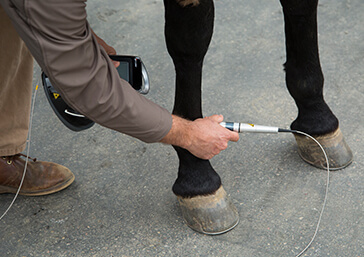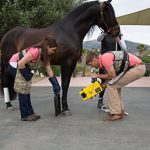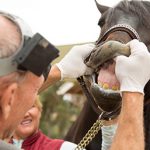 Laser therapy provides pain relief, a reduction in inflammation and accelerated healing. It is a scientifically proven healing modality. Laser therapy brings another tool to your practice for disorders for which we currently don’t have a solution, like chronic sore backs.
Laser therapy provides pain relief, a reduction in inflammation and accelerated healing. It is a scientifically proven healing modality. Laser therapy brings another tool to your practice for disorders for which we currently don’t have a solution, like chronic sore backs.
What does the application of a deep-penetrating therapeutic laser actually accomplish?
Through a stimulated photobiochemical cascade of events at the cellular level, we achieve relief of pain, a reduction in inflammation and an increase in microcirculation. These result in an accelerated restoration of function or healing within the tissues.
What are the top clinical applications for deep penetrating laser therapy?
There are four broad areas where photobiomodulation is of great benefit to the equine athlete. These are:
- To accelerate the rehabilitation and healing of many common lameness disorders.
- To maintain the peak performance within any equine athletic discipline.
- To prevent the occurrence or recurrence of athletic injuries.
- As an essential component of stem cell and PRP treatment protocols.
Combining deep-penetrating laser therapy with traditional therapeutic regimens accelerates the recovery time of many common lameness disorders in horses. Pharmacological approaches and rehabilitative physical therapy techniques, such as hyperbaric oxygen therapy and underwater treadmills, complement each other to reach the unique therapeutic goal for each patient.
Several of the most common applications of laser therapy for the treatment of lameness disorders include:
- Tendon and suspensory injuries such as tears, tendinitis and desmitis
- Synovitis and tenosynovitis
- Osteoarthritis
- Back disorders
- Wound healing
One of the most important aspects of equine sports medicine is the maintenance of these athletes at their highest level of performance. Deep-tissue laser therapy is an invaluable tool for this endeavor.
All athletes have to endure the rigors of training. This training results in pain and soreness. Periodic therapeutic laser applications allow these equine athletes to recover faster and therefore train more efficiently.
The ability to use laser therapy to prevent injuries is often overlooked or even considered non-efficacious. How important would it be to establish blood flow and elasticity within the tissues of the suspensory tendon in an equine athlete predisposed to stress in this area before a competitive event? Deep-penetrating laser therapy accomplishes this therapeutic goal.
How often do you have to apply laser therapy for it to be effective?
Laser therapy is cumulative in effect. Each treatment is complementary to the last on a cellular level. Each case is unique and a therapeutic goal should be established, setting realistic expectations for the owner or trainer.











